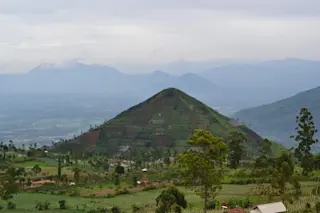"When I have a goal," says Anna Curtenius Roosevelt, her voice emphasizing the word, "everything else is secondary. And I don't let anything get in my way." At the moment, her goal is a site deep in Brazil's Amazon region, where no scientist has ever set foot. Four years ago, a gold prospector found a large, unusually shaped spear point and a well-preserved wooden harpoon on that spot. When Roosevelt first laid eyes on the miner's artifacts at a makeshift museum in a rural hotel in the Amazon two years ago, she knew she had to get to the spot and look for signs of an ancient settlement. It wouldn't be easy, but archaeology rarely is, particularly in the Amazon.
Archaeologists visiting remote sites in Brazil must rely on the skills of local pilots to locate—and land on—small airstrips in the rain forest. "The pilots here are very good," says ...














